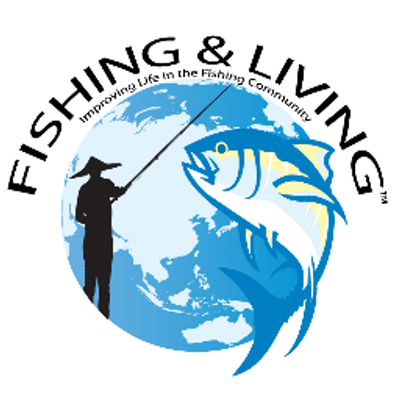November 2014

Working towards the finalization of the National Tuna Management Plan (NTMP), the Ministry of Marine Affairs and Fisheries (MMAF), MDPI, the International Pole and Line Foundation and (IPLNF) and the national Research Centre of Fisheries Management and Conservation (P4KSI) held a workshop on harvest control strategies on 30-31 October.
The event was attended by RFMO’s scientists from both the Western and Central Pacific Commission (WCPFC) and the Indian Ocean Tuna Commission (IOTC), environmental NGOs (WWF Indonesia, Greenpeace, ISSF, CSIRO and The Asia Group). Industry stakeholders weer also invitde was represented by Indonesia Handline and Pole and Line Association (AP2HI) and also scientists from Wageningen University (Netherlands) and Murdoch University (Australia).
The two-day meeting brought together experts to support the development of Harvest Control Rules and reference points for the Indonesian Handline and Pole and Line tuna fisheries in territorial waters (area from 0-200miles from the coast) and to align the needs of the government by utilizing the capabilities and protocol of the recently developed database system I-Fish.
The following points were communicated by the various stakeholders:
- It is logical to use the regional level stock assessment as it takes into account all fishing mortality
- Indonesia must formulate a harvest control policy that balances and gives effect to both IOTC and WCPFC measures (e.g. difference harvest control rules in different areas)
- Critical information to develop HCRs are size data, long-term catches and basic biological information
- Current gaps in data for effective management in Indonesia are: catch estimates, number of active vessels, observer data, logbooks and VMS.
- The National Tuna Management Plan must define the objective for the fisheries; define reference points and a management approach; and must state the objective of developing harvest control rules compatible with RFMO measures
The next steps are:
- November 2015: To revise the National Tuna Management Plan to include principles for developing reference points and harvest control rules.
- Organize 2 more workshops in year 2015
- Communicate with Industry associations regarding Harvest Control Rules
- Continue improving the collection of data required by regional management organizations (WCPFC and IOTC).
What are Harvest Control Rules?
A Harvest Control Rule is a pre-agreed action to be taken by a management body (in this case the Ministry of Marine Affairs and Fisheries) designed to achieve a medium or long-term target reference point while avoiding reaching a limit reference point. Simple Harvest Control Rules can be described as an “if, then” statement. An example of a very simple Harvest Control Rule would be “if the fishery stock level falls below the target level, then the level of fishing must be reduced by 20 percent.” Managers may additionally agree in advance what the specific management actions are to reach that 20 percent reduction in the level of fishing, such as a regional closure or gear restriction.
What are target and limit reference points?
A Reference Point is a benchmark value that helps managers decide how the fishery is performing and is often based on an indicator such as fishery stock size or the level of fishing. Fisheries scientists conduct a fishery stock assessment to provide estimates of a fishery stock size and fishing mortality over time. Reference Points serve as a standard to compare those estimates based on our understanding of the biological characteristics of the targeted species. Reference points can mark a limit, which represents a level that managers aim to avoid, or a target, which managers strive to achieve and maintain.
 Limit Reference Point– similar to a red light. When you approach it, you stop. It is a fishery stock size or level of fishing that managers do not want to reach or exceed. It typically considers only the biological state of the stock.
Limit Reference Point– similar to a red light. When you approach it, you stop. It is a fishery stock size or level of fishing that managers do not want to reach or exceed. It typically considers only the biological state of the stock.
Target Ref erence Point– similar to a green light, but more like a bull’s-eye on an archery target. It is a fishery stock size or level of fishing mortality that we aim for. It incorporates biological, ecological, social, and economic considerations. It should never be lower than the Limit Reference Point and should be sufficiently higher to ensure managers have a buffer to account for uncertainty.
erence Point– similar to a green light, but more like a bull’s-eye on an archery target. It is a fishery stock size or level of fishing mortality that we aim for. It incorporates biological, ecological, social, and economic considerations. It should never be lower than the Limit Reference Point and should be sufficiently higher to ensure managers have a buffer to account for uncertainty.
Where does Yellowfin Tuna stand?
Currently, only a Limit Reference Point has been defined (20% Spawning Biomass at Fishing Mortality=0) by the WCPFC. Target Reference Points have not been defined yet. Based on 2014 Stock assessment Yellowfin tuna is no overfished and overfishing is not occuring.

The stocks are above the limit reference point.

Recent Posts
Helmets Distribution to Fishermen’s Children in Local Communities in Bali
We distributed helmets to all fishermen children in two local coastal communities in Bali. The main goal of this event […]
Read moreAnova FoodNominated for Award of Corporate Excellence (ACE) by Secretary Hillary Clinton
The Award for Corporate Excellence (ACE) is given annually by the U.S. State Department to American companies who exhibit good […]
Read moreSchool Children Awareness Programs in Awareness Lombok
June 2012 We hosted an event coinciding with World Ocean Day and Coral Triangle Day. The event was to raise […]
Read more